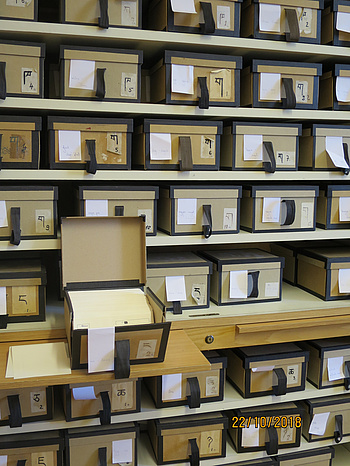Dictionary Structure
The dictionary will be published in presumably ten or eleven volumes with about 500 pages each. Five of those volumes are published already (see also Publications).

The lemmas are arranged according to the Tibetan alphabet. The main entry of a term including spelling variants usually follows the most frequently attested spelling.
With regard to verbs, the respective stems are assigned their own article, including corresponding references. This procedure takes into consideration the general uncertainty when it comes to arranging and separating the stems. In particular, it allows for a better overview over the text references—especially with frequently used words and their numerous meanings. The verbal stems are arranged without the nominalizing particles, this way the compounds always succeed their respective simplices.
Nominal derivations are usually placed below the verb: Frequently, nominal particles may be missing, therefore an unambiguous attribution to part of speech is often not possible. Only in specific cases verbal nouns are arranged separately from the verb like the noun ’khor ba “circle of reincarnations”, which experienced a considerable semantic evolution compared to the verb ’khor “circle”.
Expressions with simple auxiliary verbs are attributed to the simplex, independent of their function. This way slob not only lists references to slob “learn” but also references to slob par byed “learn” or “teach”.
Verbs with adverbial additions like kun tu, yoṅs su and yaṅ dag par, which usually render prefixes from Sanskrit are lemmatized as compounds, since this had a strong influence especially on the religious-philosophical terminology.
Particles, suffixes, and other grammatical elements are presented with instances, yet for detailed explanations we refer to respective grammars.
In comparison with the first fascicles, the number of proper names has been considerably reduced. Usually they are only included, when the term is lemmatized with another meaning.
